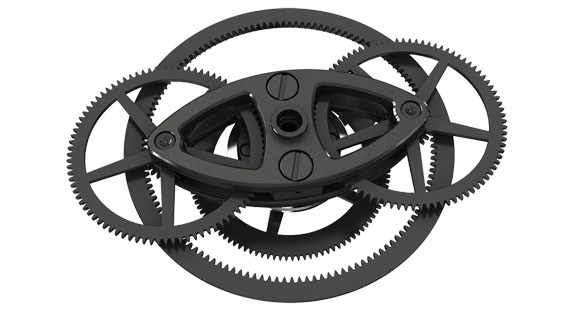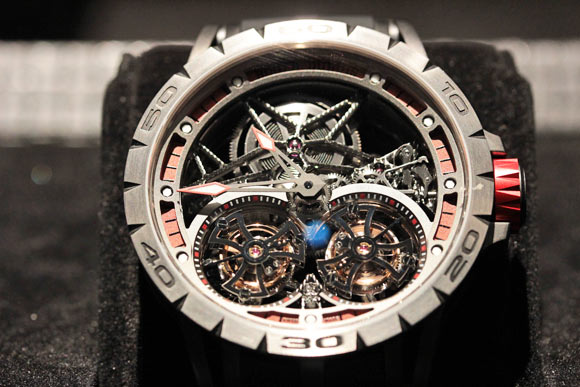Watchmaking vocabulary is sometimes puzzling. Every part or component in a watch has a name, but it doesn’t always tell you what it means or what it does. The differential is a case in point, and if it is explained you’re not necessarily any the wiser. The differential is a gear system, which is mainly found in watches with more than one escapement, such as double balance wheels or double tourbillons. It has an essential function: namely providing the average between two rates.
So you’re still none the wiser? What does it really mean? Let’s take the most common example: the double tourbillon. This kind of movement has two balance wheels, or two regulating organs that govern the rate of the watch instead of one. They are usually twinned : two sets of balance and spring, wheels and bridges with the same mass and modulus of elasticity. Although they might look alike they are not quite identical. Their behaviours are slightly different and the differences vary over time. The two tourbillons never turn at exactly the same speed. It’s a question of infinitesimal frequency with differences in tenths of a hertz that are almost impossible to measure but which nevertheless accumulate. Things become all the more critical when the two balances deliberately beat at different frequencies.

So you’re still none the wiser? What does it really mean? Let’s take the most common example: the double tourbillon. This kind of movement has two balance wheels, or two regulating organs that govern the rate of the watch instead of one. They are usually twinned : two sets of balance and spring, wheels and bridges with the same mass and modulus of elasticity. Although they might look alike they are not quite identical. Their behaviours are slightly different and the differences vary over time. The two tourbillons never turn at exactly the same speed. It’s a question of infinitesimal frequency with differences in tenths of a hertz that are almost impossible to measure but which nevertheless accumulate. Things become all the more critical when the two balances deliberately beat at different frequencies.
The operation is the same in the double tourbillon. The faster tourbillon transmits more energy to the going train while the slower one transmits less. In the end, the escapement’s transformation of energy into time becomes more efficient because it is the result of an average.

The differential consists of conical gears that link the two shafts. If both shafts are rotating at the same speed the differential is inactive. If the speeds are unequal, the differential takes energy from the faster side and transmits it through gears to speed up the slower shaft. The overall amount of energy remains the same, but its distribution varies. The system was invented by a French engineer in the 1830s and it seems that it was horologically inspired.

One can do without a differential, but the alternative is far less simple. You have to apply the counter-intuitive and nebulous phenomenon of resonance. When two balance wheels are in harmonic resonance they compensate one another’s frequencies to maintain a steady rate. Matching them is extremely complicated and it is equally difficult to get them to work together, especially in a constantly moving object like a wristwatch. So however complicated it might be, the differential remains the lesser of two evils.









